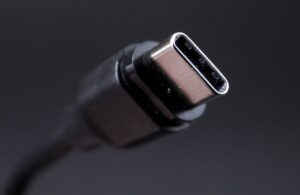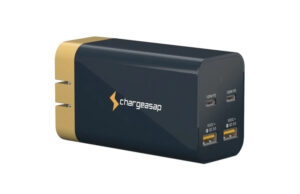The Urtopia Carbon Electric Bike is a modern-day Smartbike that revolutionized the way we see the chunky piece of two-wheeler we see every day. This reminds us of recent years when mobile phones have become extinct and everyone called them smartphones and not simply “mobile phones” anymore.
We will not repeat the content on the Indiegogo campaign page, however, we compiled the Urtopia specifications in a searchable text and table format at the bottom of this article.
Bike Features and Specifications
The weight of the bicycle is very light at just 13kg including the motor, battery and electronics. The reason for the lightweight is the carbon fiber frame, fork, seat post and handlebar. It is possible to lower the weight further if the wheels, seat rails and pedals are in carbon fiber.
In comparison, the 3D printed carbon Superstrata E is lighter at just 11kg but without the smart AI, security and safety features.
The Urtopia has a single-speed (55-22) drivetrain and is supported by a 250W motor with pedal assist speed up to 32km/h. The other key features include the AI integrated controls, hydraulic disc brake, and carbon belt chain. Once again, please check out the specs and also this user test ride.
About Cadence, RPM and Speed
The Urtopia bike has a maximum speed of 32km/h (20 mph) pedal-assisted by the 250W motor and 36V battery. The maximum single-charge range can be between 80km to a maximum of 130 km depending on the terrain. If you are always on Turbo mode going uphill, then the maximum range is shorter.
The bike has a single speed gear ratio of 52:22 for the front chainring and single rear cog. Based on a 700c wheel (29″ or 622mm rims) and 35mm tires:
| RPM | 30 | 40 | 50 | 60 | 70 | 80 | 90 | 100 | 110 | 120 | 130 |
| Speed(km/h) | 9.78 | 13.04 | 16.30 | 19.57 | 22.83 | 26.09 | 29.35 | 32.61 | 35.87 | 39.13 | 42.39 |
| Speed(mph) | 6.08 | 8.11 | 10.13 | 12.16 | 14.18 | 16.21 | 18.24 | 20.26 | 22.29 | 24.32 | 26.34 |
The above table is only for reference because the Urtopia motor will kick in to support the speed so that the pedalling is easier.
Urtopia Design Qualification Tests
The Urtopia may be cheaper than competing Carbon Fiber bicycles, but we applaud the creators who spared no expense in conducting proper design qualification tests to find out the strength of the carbon bicycle frame. We summarise the tests in the following table:
| Design Qualification Tests | |
| Seat tube fatigue test | 130kg, 3Hz, 50,000 times |
| Bottom bracket fatigue test | 160kg, 3Hz, 100,000 times |
| Front fork impact test | 640mm, 22.5kg |
| Frame drop impact test | 220mm. Headtube: 10kg Bottom bracket: 40kg Seat tube: 50kg |
| Mass drop impact test | 212mm, 22.5kg |
For those who are familiar with MIL-STD 810F design qualification standards, the fatigue tests are like the jolt tests, which “jolts” the frame with 130 and 160kg for simulated human weight.
Among the impact tests, the front fork test could be the most useful, as it tests the strength if the wheels have a head-on collision.
However, we opine it is never safe to crash a bicycle, and the frame and fork could still break if the collision force is too strong. The above tests are simply to provide confidence that the bicycle will not break easily under normal usage.
Known disadvantages
Difficult to remove the rear wheel
The Urtopia bike uses puncture-resistant tires, but they are not puncture-proof.
According to the creator, it is difficult for a single person to remove the drive belt unless there are two people or using special tools. This is unlike normal multi-speed bicycles, where it is very easy to pop off the steel chain by releasing the spring on the rear derailer.
On the bright side, it is also difficult for anyone to remove and steal the rear wheels of the bike. However, the front wheel is easy to remove like most bicycles. So if you need to use chains to lock down the frame, you only need to run the chain through the front wheel, since the back wheel is safe.
Wheel rims are not carbon fiber
Urtopia avoided any mention of the wheel design apart from the puncture-resistant tires. The wheels are a major part of a bicycle and should have an equal emphasis on the design, such as weight and stiffness.
The 3D-printed Superstrata E has a lighter weight of 11kg for the whole bike with the same maximum speed and 250W power. One reason could be that Superstrata E uses rims with deep carbon rims or carbon spokes. The Superstrata E does not have integrated displays, AI electronics with speakers, or AI-controlled lights. This could explain the 2kg difference in weight.
Besides that, the Urtopia’s optional kickstand and seat rails are also not carbon fibre.
Rear brake and signalling lights
The rear brake and signalling lights do not appear to function as we expect for a car.
- The rear light functions as either a brake light or a safety light, and not both. In the brake light mode, the light turns on when braking. In the safety light mode, the light is on permanently.
This is how it should work. Cyclists should always turn the rear lights on so that rear approaching vehicles can see. When applying the brake, the back light should then brighten up further. This should be a standard safety feature that does not require customizing.
- The rear signalling light shines an arrow on the ground (see image below)
The rear signalling lights should blink like those on the car. We cannot imagine anyone noticing the arrow on the floor, which we also find a distraction. The signal direction should come directly from the light source like most cars and not from a projected source. The creators should follow the same proven, signalling concept as cars instead of re-inventing.

Consolidated Tech Specs for Urtopia Carbon Electric Bike 2021
| Tech Specs | Urtopia |
| Release Date | Nov 2021 |
| Bike | |
| Material | Frame, fork, seat post, handlebar: Carbon fibre |
| Cable routing | Internal |
| Wheels/Tires | 700c 35mm puncture-proof tires |
| Frame Weight | NA |
| Bike Weight | 13kg |
| Drivetrain | Single-speed (100 rpm for Gates Carbon Drive Belt, 30,000km |
| Brakeset | Front and rear dual-piston hydraulic disc brakes |
| Power | |
| Motor | 250W |
| Battery | 5 modes (pedal, eco, comfort, sport, turbo) |
| Speed Levels | 360 Wh, LG Lithium-ion Removable 2.5h quick charge, 4A/36V |
| Max Speed | 32 km/h (20mph, US) 25 km/h (16mph, EU) |
| Max Range /Charge | 80-130km (80 miles) |
| Rider Heights | 1.65-1.95m (5’5″ – 6’5″) |
| Tires | Puncture-proof |
| Features | |
| Connectivity | Built-in Bluetooth, Wi-Fi, 4G, eSIM |
| Sensors | Torque sensor Fingerprint sensor Gyroscope mmWave Radar GPS |
| Security Features | Fingerprint unlock Theft detection GPS bike tracking |
| Safety Features | Collision detection and warning Turning lights (directional) |
| Smart Features | AI voice command and control Navigation directions |
| Display Panel | Yes, built-in display panel (Smartbar) Dot-matrix display OTA firmware updates |
| Lights | Front projection light (white) Rear brake/projection lights (red) 2 signalling lights (for turning) |
| Smartphone App | Yes |
| Smartphone attachment | No |
| Pricing | |
| MSRP | $1,999 |
| Warranty | Frame – 10 years Components – 2 years (exclude wearing parts) |
| Optional Items | Mud-guard (not carbon fiber) Kickstand (not carbon fiber) Extra-comfort saddle (not carbon fiber) Extra battery |
| Design Qualification Tests | |
| Seat tube fatigue test | 130kg, 3Hz, 50,000 times |
| Bottom bracket fatigue test | 160kg, 3Hz, 100,000 times |
| Front fork impact test | 640mm, 22.5kg |
| Frame drop impact test | 220mm. Headtube: 10kg Bottom bracket: 40kg Seat tube: 50kg |
| Mass drop impact test | 212mm, 22.5kg |




